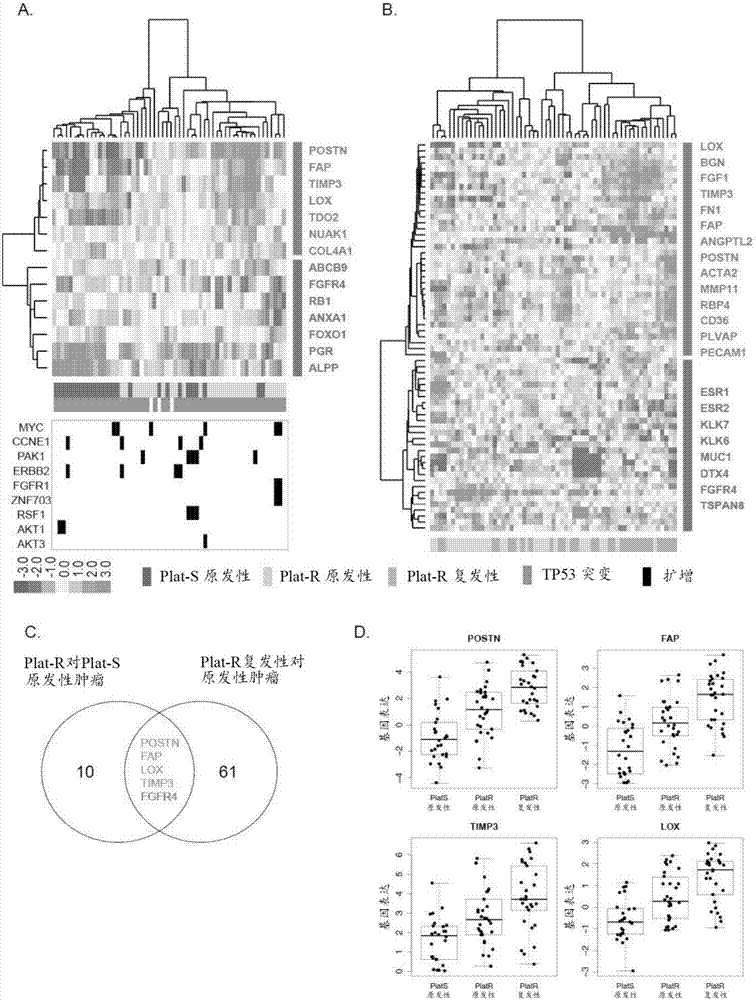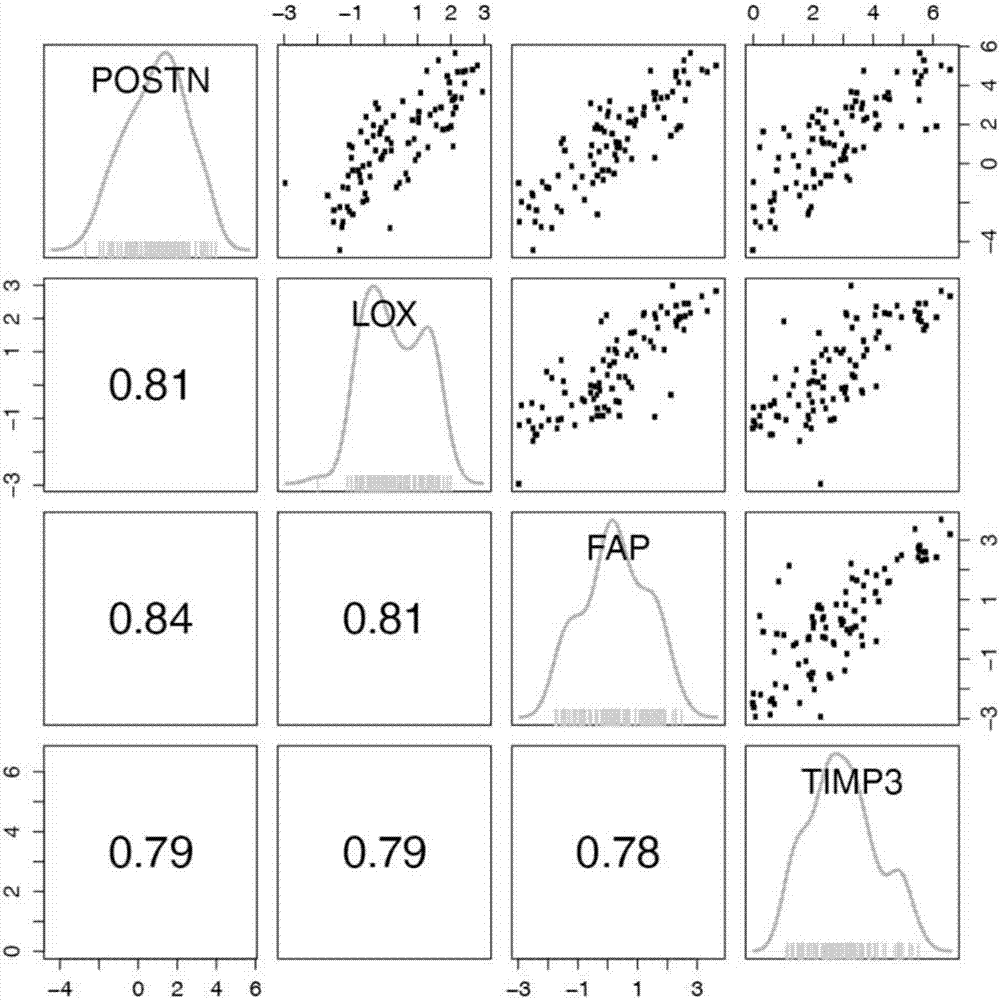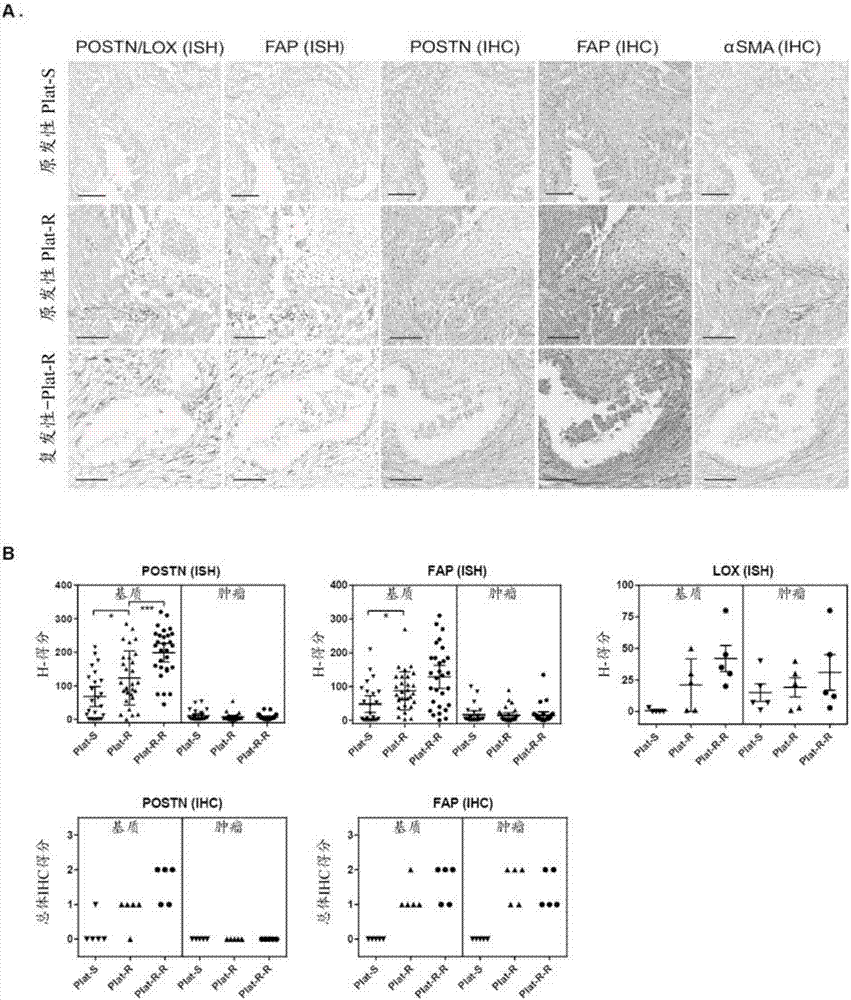Compositions and methods for treating and diagnosing chemotherapy-resistant cancers
A chemotherapeutic, cancer-based technique applied in the field of identifying patients with chemotherapy-resistant cancers, addressing issues such as poor tumor understanding
- Summary
- Abstract
- Description
- Claims
- Application Information
AI Technical Summary
Problems solved by technology
Method used
Image
Examples
Embodiment 1
[0198] Example 1: Identification of a "reactive stroma" gene signature upregulated in initial chemotherapy-resistant ovarian tumors
[0199] To identify molecular features associated with initial chemotherapy resistance in EOC, a panel of high-grade serous or endometrioid ovarian tumors with a clinically well-defined response to initial chemotherapy was selected (Table 6). This discovery set consisted of tumor specimens from 32 patients with initial chemotherapy resistance and 26 patients with initial chemotherapy sensitivity. All patients were treated with a combination of platinum and taxane as first-line chemotherapy. Initial chemotherapy-resistant patients were selected based on already having disease recurrence or progression within 6 months of completion of platinum-based first-line chemotherapy, and chemotherapy-sensitive patients were selected based on not having had recurrence or progression within 12 months of initial chemotherapy patient. Twenty-seven of the 32 ch...
Embodiment 2
[0212] Example 2: Specific derivation and modulation of reactive stromal signature genes in tumor-associated fibroblasts
[0213] To determine which specific cell types express reactive stromal signature genes, POSTN and FAP RNA ISH analyzes were performed on whole slides of tumor specimens from the entire cohort of 85 tumor specimens. Additionally, POSTN and FAP IHC, and LOX RNA ISH analysis were also performed on 15 representative tumor specimens. Representative images of ISH and IHC showing these markers are shown in Figure 3A. In Plat-S primary tumors, none or significantly lower levels of reactive stromal signature genes were detected in stromal or tumor cells by ISH or IHC. In contrast, in Plat-R primary and recurrent tumors, POSTN was found to be expressed only in tumor-associated fibroblasts, whereas LOX was mainly expressed in tumor-associated fibroblasts and at a lower level in tumor cells and FAP. Tumor-associated fibroblasts expressing POSTN / LOX / FAP also showed ...
Embodiment 3
[0214] Example 3: stromal expression of POSTN is associated with a desmogenetic phenotype
[0215] Desmogenesis is a common pathological phenotype found in many cancer types. Histologic manifestations of desmogenesis include marked overproduction of extracellular matrix proteins, and extensive proliferation and disintegration of myofibroblast-like cells. Changes in stromal cell proliferation and deposition of extracellular matrix components lead to marked changes in overall tissue heterogeneity and elasticity, with concomitant interstitial fluid pressure. These changes have been suggested to contribute to chemotherapy resistance in cancer. To assess the potential link between reactive matrix molecular signatures and physiological features of desmogenesis, the degree of desmogenesis was scored on H&E-stained whole-tissue sections of the entire cohort of tumor specimens in this study. Of the 85 specimens scored, 26 of them were considered too difficult to score due to tissue d...
PUM
 Login to View More
Login to View More Abstract
Description
Claims
Application Information
 Login to View More
Login to View More - R&D
- Intellectual Property
- Life Sciences
- Materials
- Tech Scout
- Unparalleled Data Quality
- Higher Quality Content
- 60% Fewer Hallucinations
Browse by: Latest US Patents, China's latest patents, Technical Efficacy Thesaurus, Application Domain, Technology Topic, Popular Technical Reports.
© 2025 PatSnap. All rights reserved.Legal|Privacy policy|Modern Slavery Act Transparency Statement|Sitemap|About US| Contact US: help@patsnap.com



